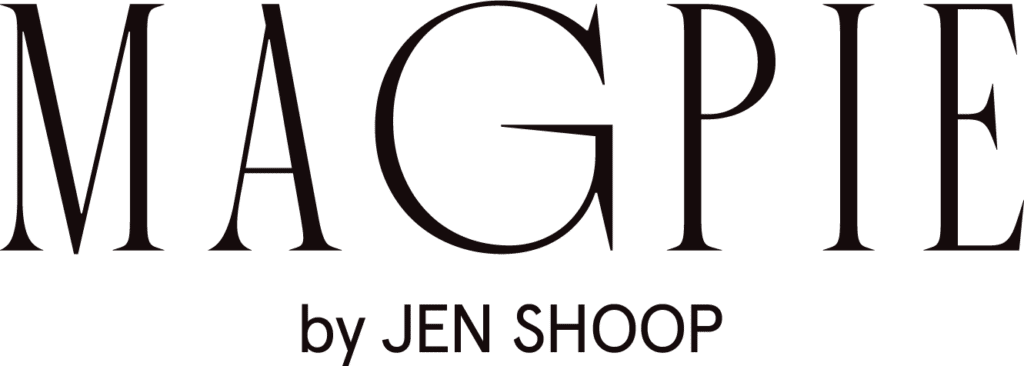Mr. Magpie is trained in the sciences and I am trained in the humanities and I was just thinking the other day how these backgrounds have oriented us differently in the way we navigate problems and texts and the analysis of any number of situations. I have observed that my husband, a trained electrical engineer, approaches problems — even lightweight ones, like which dog food to buy our pup — by virtue of process of elimination, and in a meticulously structured way. He will surface as many possible pathways to solution at the start, bearing a “no bad ideas” mindset, and then lay them all out before himself before determining some rubric for prioritizing which option to pursue first. His strategy often leans heavily on Excel formulas (cf: his mattress research). I tend to operate — quickly — on intuition instead, and this means sometimes I take a long and circuitous path and wind up back where I started and regret not having taken the time to think through all possible avenues first. On the flipside, I tend to make decisions more swiftly, which occasionally feels like an asset.
I used to think this was a personality thing, and maybe it is, but I also think that my background in English bears some responsibility for my habits in this regard. English taught me that the longer I look at something, the more possibilities I can surface. That is: the longer I sit with a text, the more possible readings I find, or the deeper the roots travel and curlicue. And so sometimes, in more trivial matters, I feel that moving briskly and — say — just picking the first dog food that appears semi-well-rated — is the best course of action, especially from the standpoint of avoiding decision fatigue or the possibility of becoming so waterlogged with information that I will have a difficult time finding my way. As Voltaire said: “The more I read, the more I acquire, the more certain I am that I know nothing.” Sometimes, then, I reason that it is OK to go with “good enough” and trust that somehow the gods of the Internet have done sufficient work on user ratings that I can use four stars as a proxy for my own research.
I say all of that semi-glibly, because I think the more profound insight of studying English is that we are meant to be path finders who illuminate by candle rather than spotlight. We raise a torch as we meander through caves and caverns, chasing possibilities, and as we do so, reveal other pathways and light up walls scribbled faintly with markings and contemplate whether we should continue further or hang out where we are. There is always more to discover. We realize we can never exhaust a text. We can never map something to its completion. We can do our best to mark a well-lit path but there will always be subterranean worlds and different points of access we’ve not yet thought of. And so sometimes I think that means I am more comfortable just starting down a path — any path — and seeing where it takes me. I’ve marched blindly into the underground enough times to realize there are always points of egress and rarely stretches at which the going gets so rough I can’t find my footing. To re-ground the metaphor: there are always grammatical choices and elements of narrative design on which to perch and make a case for whatever reading I’ve swung wildly down the stairwell with. And if there aren’t, well! Time to head back up for fresh air.
In short, is it possible that those in the sciences are trained to whittle down the list of possibilities and those in the humanities are trained to proliferate that list? It feels that we are tasked with inverted computations. To be sure, neither is inherently better than the other. In many ways, I prefer the restraint and measure and discipline I’ve seen in my husband.
I’m not sure, in any case, whether my “bias for action” is more a personality trait or a product of my education. Probably a fusion of the two.
What do you say? Have you come to similar findings?
Post-Scripts.
+I came to similar conclusions here: “the or maybes is the great gift of a degree in English, the vindication I might offer my friend, should we ever revisit the topic: the accommodation of a multitude of narrative possibilities. English trained me to look at a single word and ask: “but why this one?” and to recognize a certain rhyme scheme and ask “what if it were another?” I am forever shaped by the way those questions both exact and forgive.”
+What would you study if you were going back to school?
+If you ever find yourself in the wrong story, leave.
+On blooming where you are planted.
+Speaking of blooming: I am a late bloomer.
Shopping Break.
+These chili pepper earrings are just FUN.
+A reader recently asked me for a chic everyday crossbody in leather on the slightly larger side (“I don’t want to play tetris with my belongings every day,” she said — HA! I so get that!), and I couldn’t recommend this Oroton style quickly enough. Absolutely gorgeous and elegant and I love the pop of blue on the lining.
+Another reader was on the hunt for this mirror, which I know several of you have and love. (You can see it in a room designed by Ariel Okin here.)
+How great are these gingham sheets for a toddler bed?
+Julia Amory has some great beauty recs if you follow her on Instagram, and she insists this Mac eyeshadow in the lilac color (“Ready to Party”) is great for those with blue eyes. She swipes a bit of bronzer over the top to mute the color a bit.
+Personally, I think Laura Mercier’s “Morning Dew” eyeshadow is the perfect everyday color — it brightens the eye but does not look like you’re wearing anything. It’s the only eyeshadow I consistently buy in a one-off palette because I use it so much. Otherwise, I stick with mixed palettes — this Bobbi Brown set (on sale for only $19) is perfect.
+I am so sad this gorgeous tablecloth (currenlty on sale!) does not come in a slightly larger size because I have been looking for a festive otomi-style tablecloth for Mr. Magpie’s birthday celebration. It’s a tad too small for our dining table — hope it works for someone else!
+This Johanna Ortiz is on my mind…
+Pretty flat weave towels at a great price.
+Absolutely love these pendants.
+This sequin midi is now $80!
+Fabulous statement shorts.
+This dramatic jumpsuit!!!!
+Classic, well-priced throw blanket.
+This copper drinkware collection is SO good and on sale! Thinking of this for things like mulled wine, mules, and even eggnog. And we have a copper ice bucket that I absolutely love that cost multiple times the price of this one.
+Gorgeous spring green color.
+Gorgeous spring dress. As is this one, by the same brand — makes me want to kick off my shoes and dance!


I think that many scientific disciplines actually lend themselves to a more ‘freeform’ thinking pattern that is more similar to that evoked in humanities studies.
My background is in biologic and forensic sciences, but I also love to read and write, and find as much joy in decorating a page with words as I do with formulas. However, I was always guided to think about what tools I have at hand and what my goal is, but never told or encouraged to find myself at that goal in a linear manner. I enjoyed my science courses as much as I did because they mirrored the curiosity fostered in my other humanities classes, and because they dared me to find new and innovative ways to accomplish my goals.
I think I lean more toward the idea that those who are disciplined to work with straightforward, logical reasoning have that practice rooted more in their personality than in their education, because as one who considers herself a science nerd (down to the thick-rimmed glasses!), I’ll be the first one to extoll that there’s black, white, and gray, and that often the means to an end is a tangled, messy ball of curiosity, ingenuity, and unconventional wisdom.
That said, I love the juxtaposition you’ve presented, and thoroughly enjoyed reading this post!
Hi Jessica – Thanks for these thoughts! You know, you’re so right. The dichotomizing I was presenting here is reductive and probably not particularly helpful or accurate. I often find the impulse to categorize things, including differences between my husband and I, but the truth is always messier. Even as I wrote that post, I was thinking how Mr. Magpie will also sometimes totally “buck” his usual way of doing things. He is also prodigiously creative. I love the way you brought this back around for me!
xx
Thank you for writing this! I have a PhD in English and teach writing at a technical university, so the difference you describe is very familiar to me. I love the metaphor of illuminating the cave of knowledge or understanding in those two ways. (I’m going to borrow it when I need to explain to a recalcitrant engineer why analysis is important!) It’s the difference between exploring the cave and seeing what you find and going in with a mission.
As you point out, the wonderful thing about literary or narrative thinking is that it proliferates possibilities. That’s frustrating when you need to solve a specific problem or narrow things down, but on the other hand, the great beauties of art or sculpture or stories of the world weren’t necessarily created as “problems to be solved.” They were the result of iteration (like Picasso’s “Guernica”— https://hipporeads.com/how-picassos-guernica-has-shaped-our-understanding-of-creativity/).
We certainly need problem-solvers, and their “value” is easy to quantify: how many solutions did they come up with? How much money did a solution save? etc. But our capacity as trained readers to know and understand stories, to see them and to ask “why this and not that?” means that we can be more generous and less rigid in our thinking. We aren’t trapped into thinking there’s one “best” way. That may not help in a concrete way when buying dog food, but it certainly does when we have conversations with our kids about how to be a good person, or when we get dressed to evoke a certain feeling, when helping a friend through an emotional crisis, or even where to go on vacation.
I guess what I’m doing here is pushing back a little on the idea that quantifiable thinking is more “practical” or “easier” than our narrative or analytical way. Delight and possibility and connection and relationships aren’t quantifiable. And that’s beautiful.
Hi Anne Marie! What a delicious and thoughtful reply — thank you so much for the provocation at the end. You are so right. I think that having the two of us balance one another out, or challenge one another, or just nestle alongside one another and be aware of our different approaches, is a gift. Mr. Magpie was just using an analogy the other night about how music sounds good to us precisely because of differences in instrumentation, dynamics, keys, etc, and that music would be so boring if it were all the same key played the same way over time (would it be music?) — and his insight at the end was similar to yours, though we were discussing a different subject: that difference in this case is good, and needed, and beautiful.
Thank you for resituating this thinking!
xx
PS – Welcome to the comments section!